Siopao Asado recipe is easier to make than you think! With sweet and savory meat filling and soft and pillowy buns, this homemade recipe tastes as good, if not better, than store-bought. Plus, learn the tips on how to make the steamed buns pearly white!
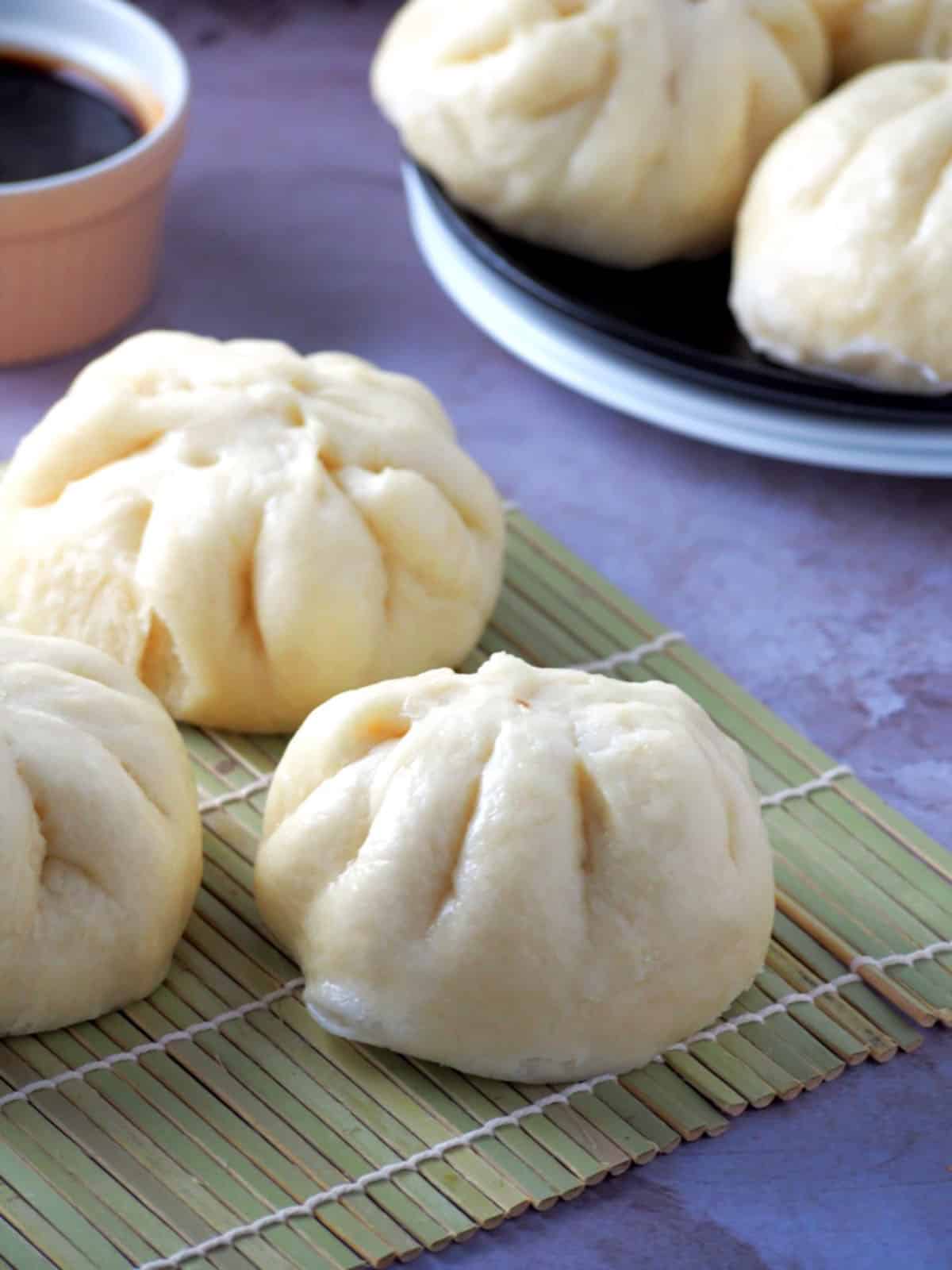
If you've been following me on Instagram, you probably saw my photo of my sorry attempt at siopao-making. A #majorfail! They were so hard and dense that they would have put Goliath down to sleep.
I usually use refrigerated biscuits to make my cheater's siopao, but I wanted to up my game and learn how to make the dough from scratch. It was easy enough to tweak the Asado filling to get the right balance of sweet and salty I wanted, but the bun itself proved more difficult.
I tried the many variations I found online but couldn't find the texture I was looking for. I was ready to throw in my white towel when I saw a tutorial for Vietnamese steamed buns on YouTube, and it looked promising enough to get me back on my siopao quest. And the recipe was indeed spot on! The buns were soft, fluffy, and pearly white, just as I liked.
Ingredient notes
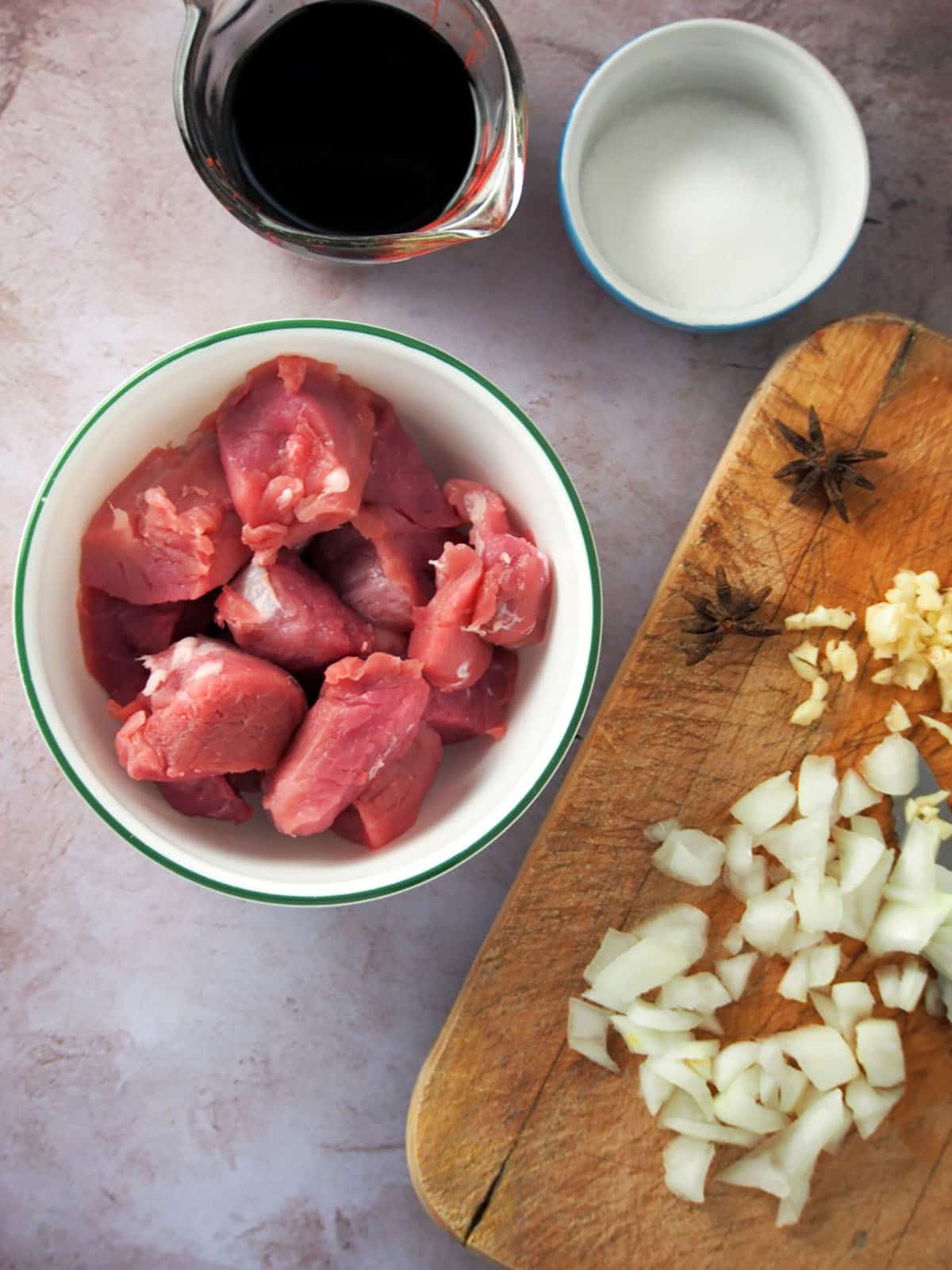
The perfect siopao asado has two key components: the pillowy steamed bun and the sweet-savory meat filling, creating a delicious marriage of texture and flavor.
M
Dough Ingredient notes
The flour and sugar in the dough recipe are in weight, not volume (grams vs cups). I suggest using a kitchen scale to ensure accurate measurements and a more consistent product.
- Milk- enriches the dough with a bit of creaminess.
- Instant Yeast- essential for making the dough rise and creating tiny air pockets that give siopao a soft texture.
- Salt- enhances the overall flavor while balancing the sweetness
- Sugar- Adds sweetness to complement the savory filling while feeding the yeast.
- All-Purpose Flour- the foundation of the dough. A versatile, general-use flour with a balanced protein content ideal for light, airy buns.
- Baking powder- a leavening agent that helps the dough rise to a lighter texture.
- Vegetable Oil- Makes the dough easier to handle and acts as a lubricant, tendering the dough for a softer crumb.
- Lime juice- helps whiten the buns
Meat Filling Ingredient notes
Siopao can be made with various fillings, and the two most popular in Filipino cuisine are siopao bola-bola and pork Asado, which we'll be using in this recipe.
- Pork- use pork shoulder for the right balance of tender meat and flavorful fat. For variety, you can also use boneless chicken thighs.
- Water- for braising; substitute pork broth to boost flavor.
- Soy Sauce- base of the sauce, bringing a deep, umami taste
- Sugar- creates a delicious balance of sweet and savory characteristics of Macao-style asado.
- Oyster Sauce- adds a layer of umami and a slight sweetness.
- Garlic and Onions- these aromatics enhance depth and aroma.
- Cornstarch- Mixed into a slurry with water to thicken the sauce and add a glossy texture.
- Star Anise- you can also use five-spice powder
A
Materials needed
- mixing bowls
- thermometer to check the liquid temperature, optional
- food scale to weigh flour and sugar
- rolling pin
- wax or parchment paper, cut into 4 x 4-inch squares
- steamer
Making steamed pork buns
Siopao from scratch is easier to make than you might think. Follow these simple steps and tips to enjoy homemade steamed buns right in your own kitchen!
Meat Filling
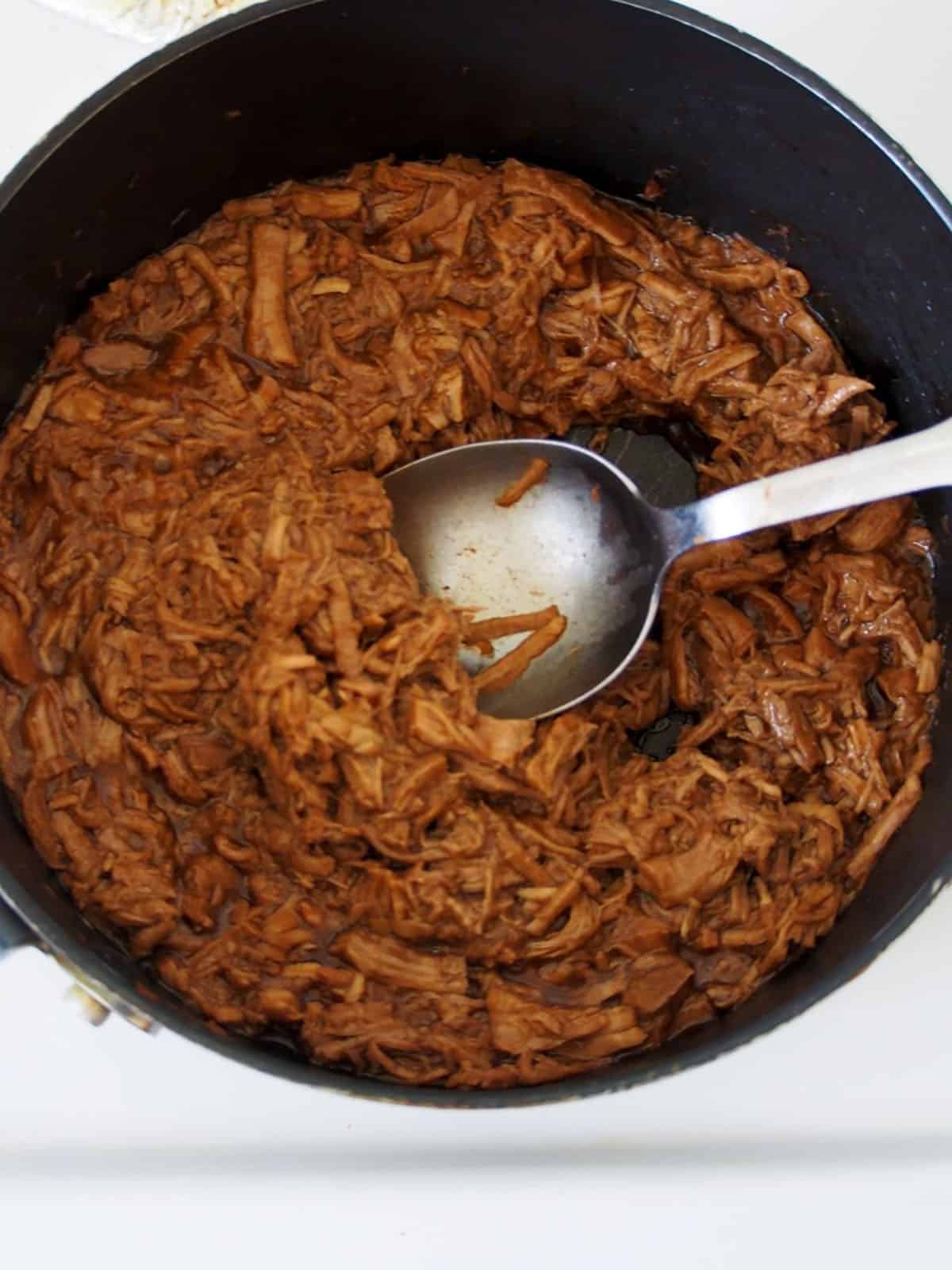
- To prepare the asado, pork shoulder is braised in a mixture of soy sauce, oyster sauce, sugar, and star anise until it is fork-tender and fragrant with sweet and savory flavors. The meat is shredded, and the resulting liquid is thickened with a cornstarch slurry to use as a sauce for the steamed buns.
- Cool the filling before using it, as the escaping steam might tear the dough. To simplify the process, it can be prepped in advance. Allow to cool completely, transfer in an airtight container, and refrigerate for up to 3 days.
Siopao Dough
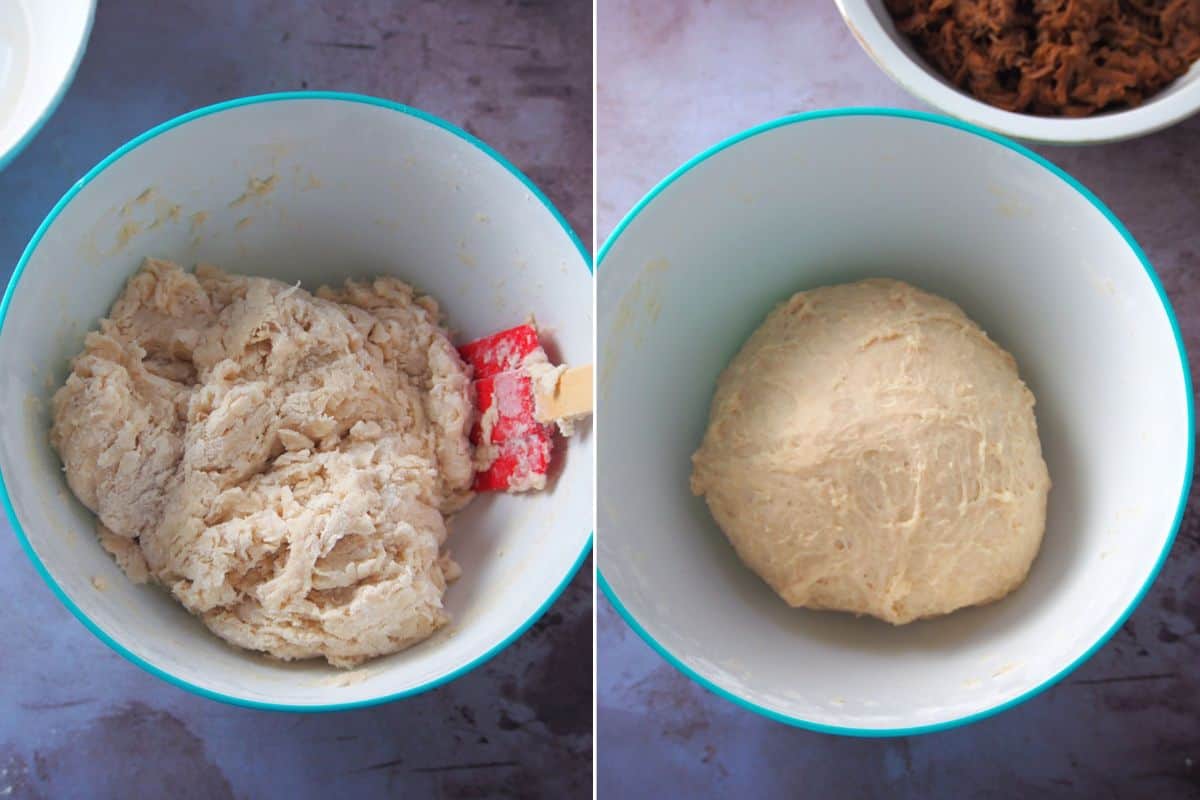
- Combine the warm milk, yeast, sugar, and salt in a small bowl. Mix well and let stand for 5 to 10 minutes or until foamy. This step is to “prove” that the yeast is alive and active.
- Check the temperature of the milk to ensure it's at 105 to 115 F . If the milk is not warm enough, it might not activate the yeast. Too hot, and it might kill the yeast.
- Combine the flour, the rest of the sugar, and baking powder in a large bowl. Stir until well incorporated. Add the oil and squeeze a few drops of lime juice into the flour mixture to help whiten the buns. Add the yeast mixture and stir until combined.
- In the bowl, knead the dough for about 10 to 12 minutes or until smooth, elastic, and no longer sticky. Adequately kneading the dough will result in a smooth steamed bun without wrinkling.
- Form the dough into a ball, cover it with plastic film or a clean kitchen towel, and let it rest until doubled in size. Depending on the ambient temperature, this will take about 2 to 2 ½ hours.
Bun Assembly
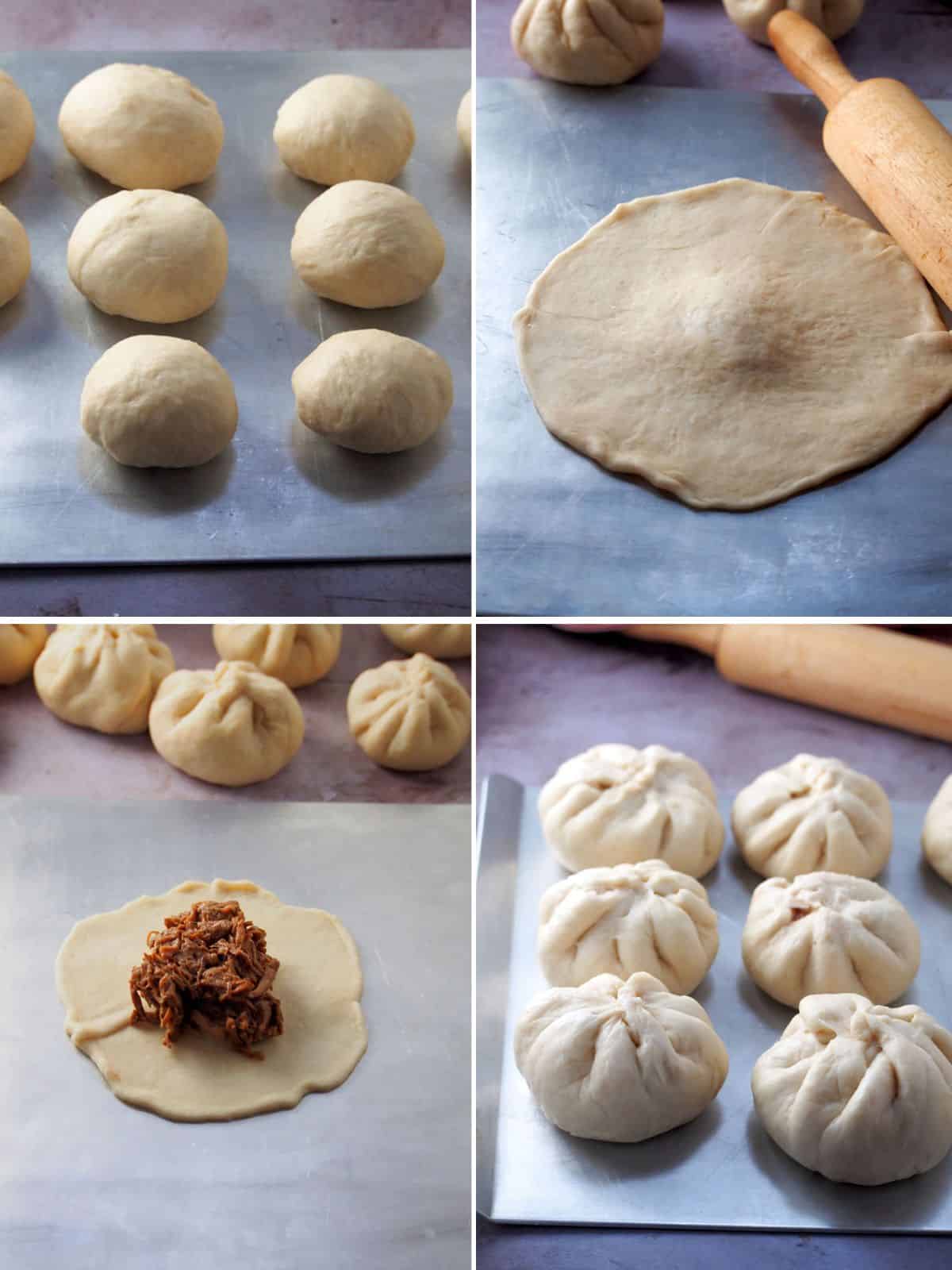
- Turn the dough out on a flat working surface. Form into a long log and cut into ten pieces. You can also use a weighing scale to ensure even size. Form each dough into a ball and arrange it in a single layer on a baking sheet. Cover with a clean kitchen towel and let rise for another 30 minutes or until puffy.
- Using a rolling pin, roll out the dough balls into a 4 to 5-inch flat disk. Make sure the edges are thinner than the center to keep the filling from leaking.
- Place a tablespoon or so of the shredded pork in the center. Try to keep the filling away from the edges to make pleating easier. Gather the edges and pleat around the filling. Pinch and twist to seal completely. Place the prepared buns on a square parchment paper and rest for another ten minutes.
- Add a couple of tablespoons of vinegar to the steaming water for whiter siopao.
- Arrange the dough in a single layer, about 1 inch apart, on a steamer and steam for about 15 to 20 minutes. Steam on LOW heat to keep the buns from collapsing or deflating.
- After steaming, turn off the heat and keep the lid on for 3 to 5 minutes to prevent the siopao from collapsing. Remove the buns from the steamer and serve with the sauce. Careful! The filling may be too hot!
Helpful tips
- Cover the steamer lid with a kitchen towel or cloth to keep the condensation from dripping onto the buns and making them soggy.
- There will be a lot of liquid even after the meat is tender This flavorful juices will be thickened and used as siopao sauce.
How to serve and store steamed pork buns
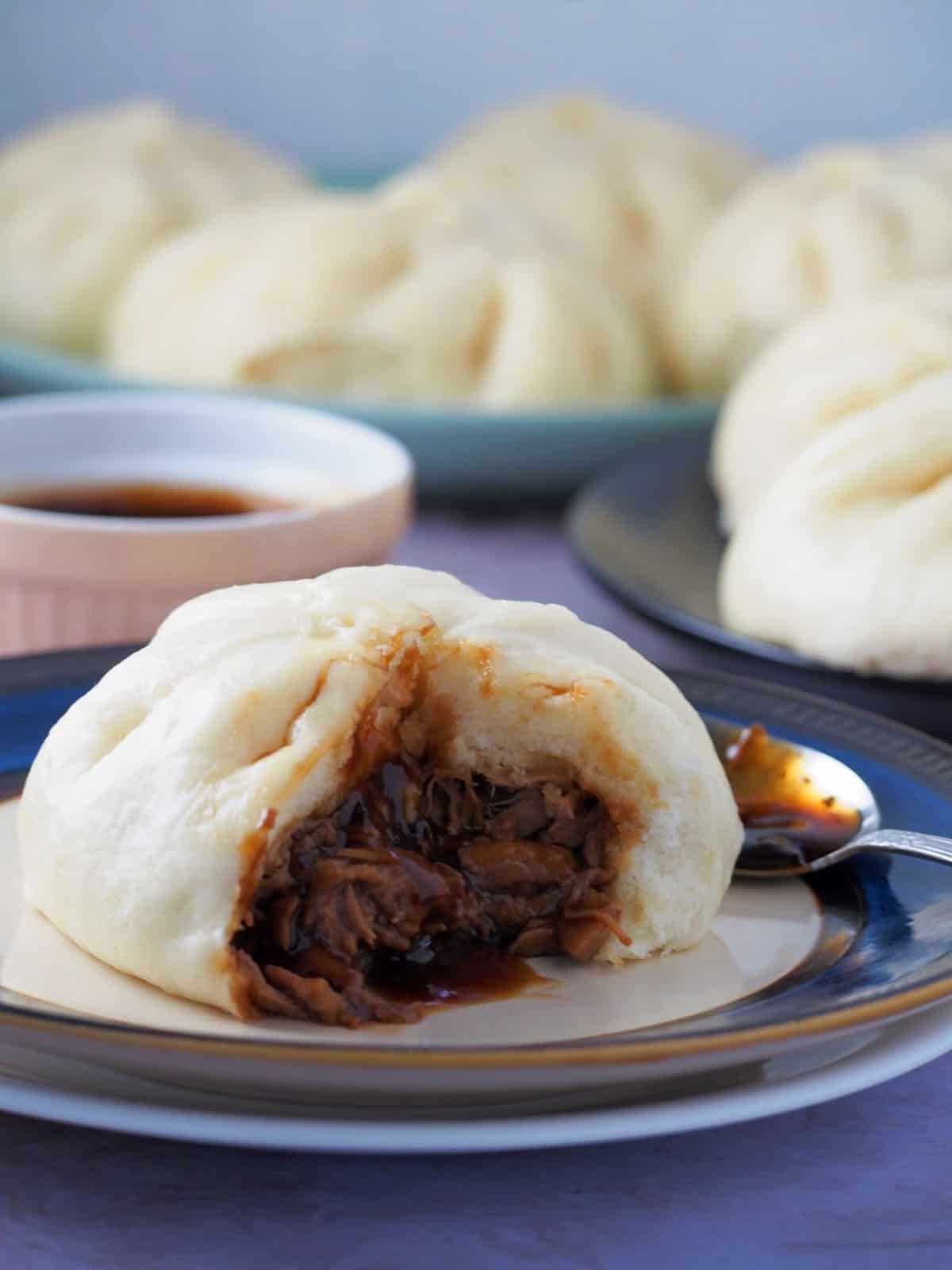
- Serve as a filling midday snack or a part of the main meal. Siopao and chicken mami noodle soup combo is one of the most iconic food pairings in the Philippines.
- Store leftovers in a container with a tight-fitting lid and keep them in the refrigerator for up to 3 days.
- To freeze, arrange in a single layer with space in between on a baking sheet and freeze until firm. When frozen, transfer to resealable bags or airtight containers and keep in the freezer for up to 2 months.
- To reheat, thaw in the refrigerator and steam for 3 to 5 minutes.
Ingredients
For the Asado Filling
- 1 tablespoon canola oil
- 1 small onion, peeled and chopped
- 2 cloves garlic, peeled and minced
- 1 pound pork butt or shoulder, cut into large chunks
- 2 cups water
- ⅓ cup soy sauce
- 2 tablespoons oyster sauce
- 3 tablespoons sugar
- 2 star anise
- 1 tablespoon cornstarch
For the Siopao Dough
- 260 ml warm milk (105 to 115 F)
- 2 teaspoons dry instant yeast
- 2 tablespoons sugar
- ½ teaspoon salt
- 500 grams all-purpose flour
- 2 teaspoons baking powder
- 100 grams sugar
- 2 tablespoons vegetable oil
- lime
Equipment
- Steamer
Instructions
For the Siopao Filling
- In a pot over medium heat, heat oil. Add onions and garlic and cook until softened.
- Add pork and cook, turning as needed, until lightly browned.
- Add 2 cups of the water, soy sauce, oyster sauce, sugar, and star anise. Stir until well-dispersed. Bring to a boil, skimming scum that may float on top.
- Lower heat, cover, and continue to cook for about 1 hour or until meat is fork-tender. Add more water in half cup increments as needed to maintain 1 1 /2 cups liquid.
- With a slotted spoon, remove pork from the pot and let cool to touch. Using two forks, shred meat.
- Remove about 1 cup of the braising liquid and set aside. Return shredded meat to pot and bring to a boil.
- In a bowl, combine cornstarch and bout ¼ cup water. Stir until smooth and cornstarch is dissolved. Add half of the cornstarch slurry to the pot of meat and stir to distribute. Continue to cook for about 1 to 2 minutes or until thickened. Remove from pan and allow to cool.
- In a saucepan over medium heat, combine the reserved 1 cup braising liquid and the remaining half of the cornstarch slurry. Bring to a boil, stirring regularly, for about 2 to 3 minutes or until thickened. This well be the siopao sauce.
For the Siopao Dough
- In a bowl, combine milk, yeast, the 2 tablespoons sugar, and salt. Stir well until dissolved. Let stand for about 5 to 10 minutes or until the mixture is foamy.
- In a large bowl, combine flour, the 100 grams sugar, baking powder, and vegetable oil. Mix well. Add a few drops of lime juice into the flour mixture.
- Add yeast mixture to the flour mixture. Mix together until it forms a dough. Continue to mix and knead until the dough is smooth and no longer sticky.
- Cover with a clean kitchen towel and allow to rise in a warm place for about 2 hours or until double in size.
- Remove the dough from the bowl, place on a clean work surface, and form into a long log.
- With a knife, cut the dough into 10 equal size pieces and then form each piece into smaller balls. Cover the dough with a clean kitchen towel and allow to rise for about 30 minutes.
To assemble Siopao Buns
- On a clean working surface, place one piece of dough, and with a rolling pin, roll out into about 4 to 5-inch diameter, making sure to get edges thinner than the center.
- Place about a tablespoon of the meat filling in the center.
- Gather the edges of the dough, pleat around the filling, and twist to fully secure. Place bun on a piece of parchment or wax paper. Repeat with remaining dough and filling.
- Arrange prepared buns in a single layer on a flat baking sheet, cover with a kitchen towel, and allow to rise again for another 10 minutes.
- In a steamer, place buns in a single layer, an inch-apart. Add about 2 tablespoons of vinegar to the steaming water (for whiter buns).
- Steam buns on low heat for about 15 to 20 minutes. Keep the lid on for about 3 to 5 minutes to prevent the buns from deflating.
- Remove from steamer and serve with the asado sauce.
Notes
- There will be a lot of liquid even after the meat is tender These flavorful juices will be thickened and used as siopao sauce.
- Cool the filling before using it, as the escaping steam might tear the dough. To simplify the process, it can be prepped in advance. Allow to cool completely, transfer in an airtight container, and refrigerate for up to 3 days.
- Check the temperature of the milk to ensure it's at 105 to 115 F . If the milk is not warm enough, it might not activate the yeast. Too hot, and it might kill the yeast.
- Cover the steamer lid with a kitchen towel or cloth to keep the condensation from dripping onto the buns and making them soggy.
- Roll the dough with thinner edges than the center to keep the filling from leaking.
- Keep the filling away from the edges to make pleating easier.
- Add a couple of tablespoons of vinegar to the steaming water for whiter siopao.
- Steam on LOW heat to keep the buns from collapsing or deflating.
- After steaming, turn off the heat and keep the lid on for 3 to 5 minutes to prevent the siopao from collapsing.
Video

Nutrition Information
“This website provides approximate nutrition information for convenience and as a courtesy only. Nutrition data is gathered primarily from the USDA Food Composition Database, whenever available, or otherwise other online calculators.”

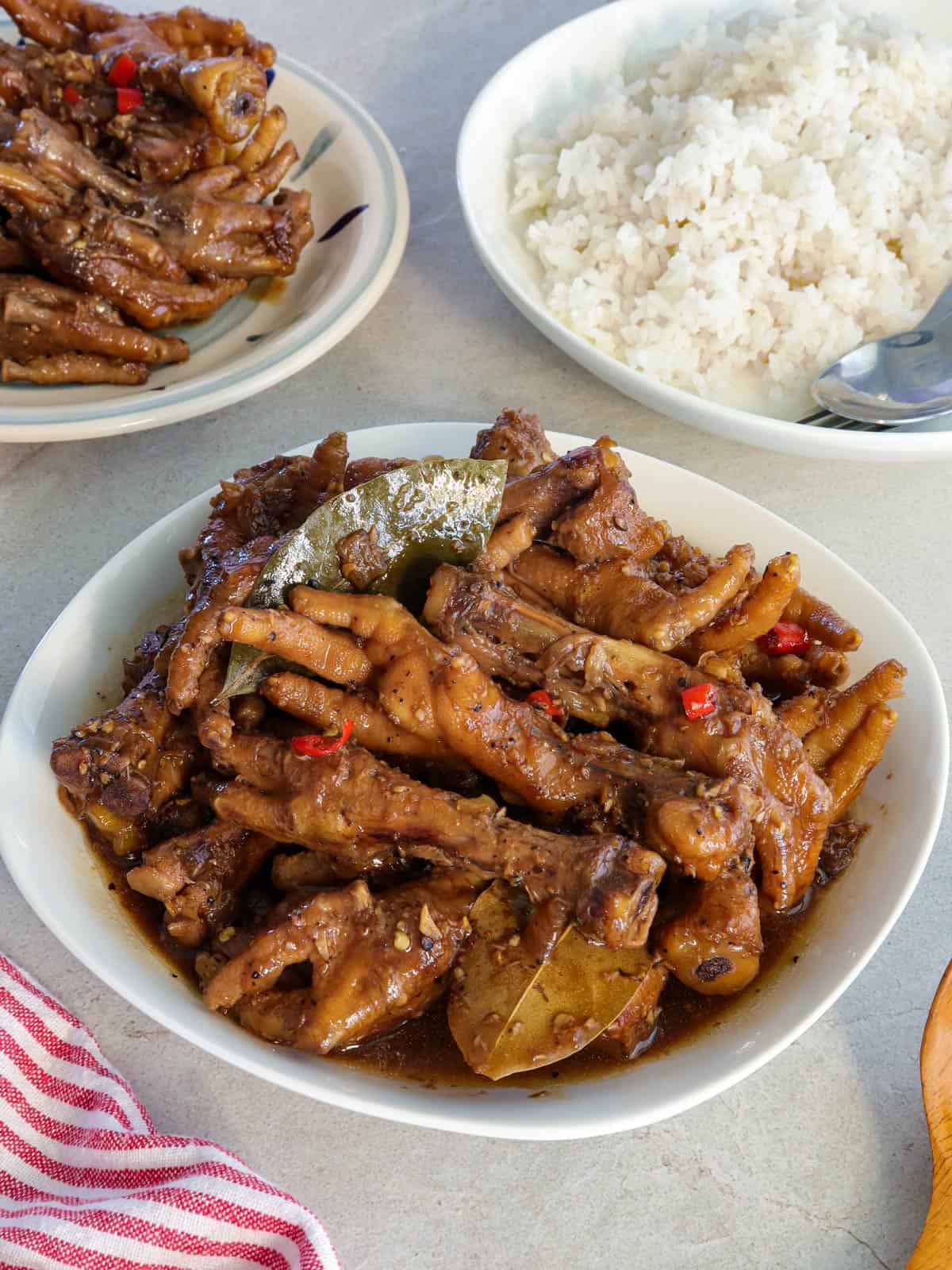

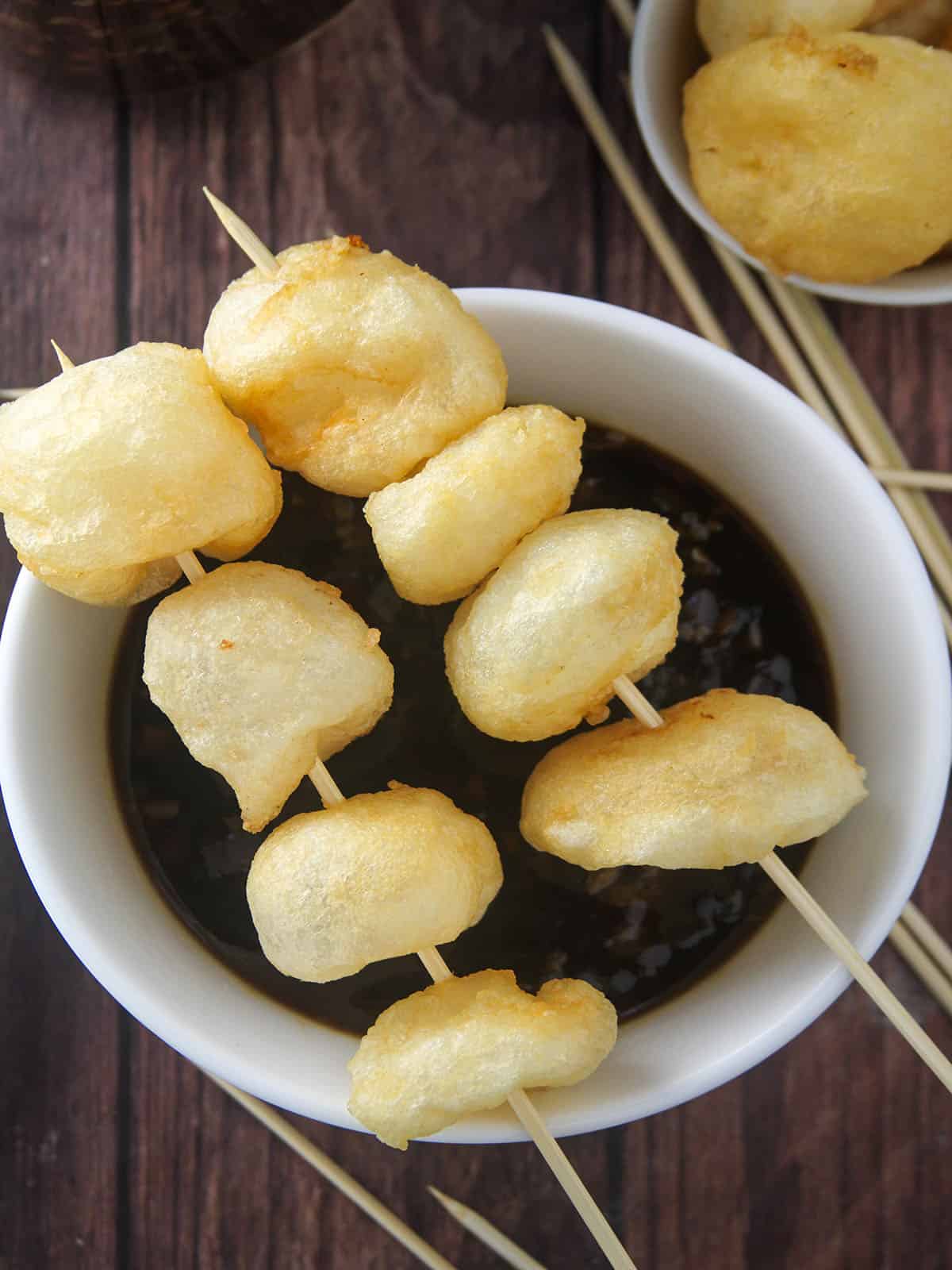

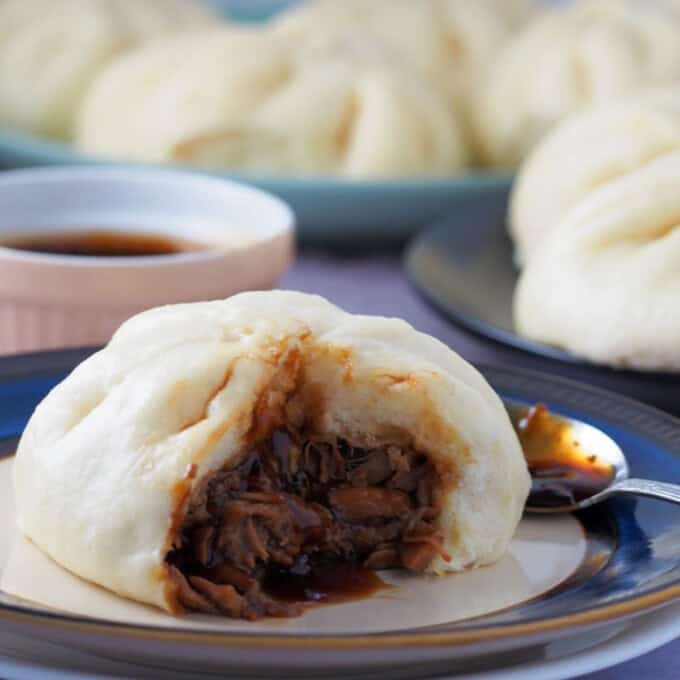
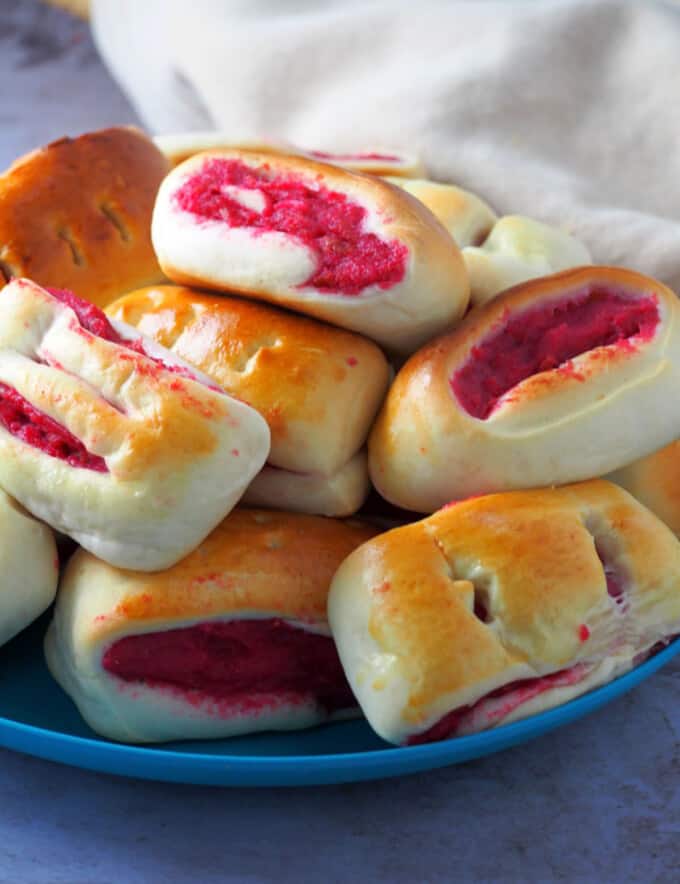
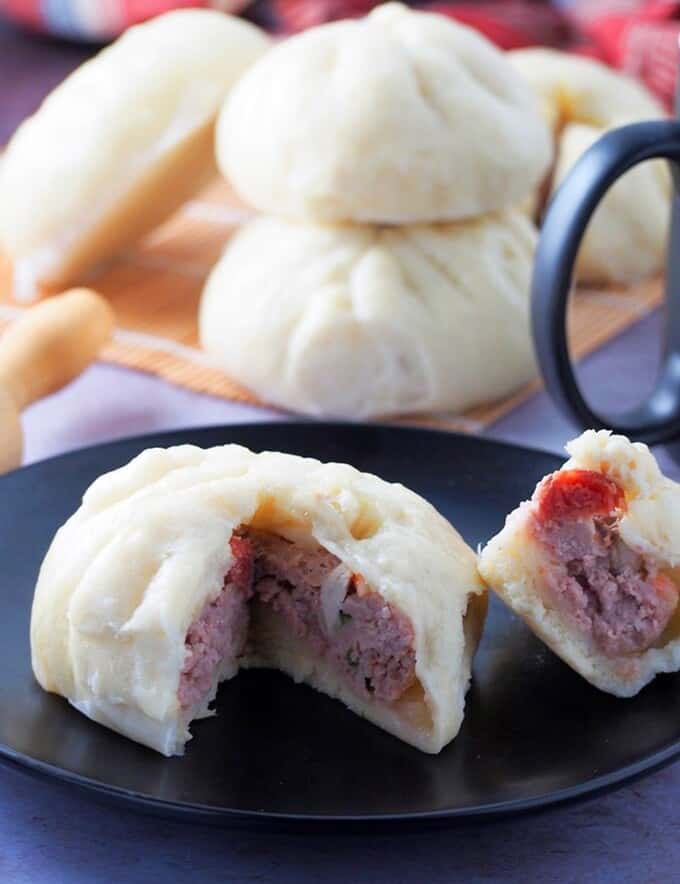
Alice says
Hi, Lalaine, I made this recipe but after I steamed it the dough deflated. What did I do wrong? Please let me know. I was disappointed when the dough deflated. And by the way, the filling was delicious.
Kate says
What’s the dough weight (grams) in making the ball?
Trisha G says
I tried this recipe and it turned out really yummy! I think I need to put more lime in the dough to make it whiter but other than that, really happy with the siopao. Thank you so much for sharing this recipe.
che says
Hi! can I make the dough overnight then pleat it with the filling on the morning? is there such thing as over rising of dough? Thank you for answering.
michael frick says
i have phillipino coworkers and they made this yesterday at work. i fell in love with it in the first bite. i am a culinary arts graduate and i cant wait to try this out myself and have my coworkers critique them for authenticity. thank you for making this recipe available. 🙂
Lalaine Manalo says
Hi there! Let us know how it goes 🙂
Julia says
I love your filling recipe. However I followed your dough recipe to a T, but my siopao keeps opening whenever I steam them. Any thoughts?
Lyka Emerie Castasus says
Hi, is it ok not to add baking powder?
Anna says
Your recipe is so delicious. First time to try it, and it is the flavour that I’ve been craving for in a Siopao. When I freshly made it, bun was thick and fluffy. After storing it, it became thin. Do you have any idea why it became thin?
Lalaine Manalo says
I am sorry but I don't understand what you mean by thin? The steamed bun shrunk?
julia jumaday says
hello Mam Lalaine, I already have completed ingredients to prepare to cook siopao. However, there is one missing ingredient active dry yeast which no available at Robinson supermarket near our place. Can i replaced active dry yeast into Baking Soda ? By the way what is good brand name of active dry yeast my first time to search yeast at supermarket because it is also my first to steam siopao. Also can i use rice cooker steamer but no temperature since one push of on of rice cooker
Lalaine Manalo says
Hello, Julia,
The yeast is important ingredient in the recipe, and I am not sure how to work the bun recipe without it 🙁
Nida says
Can I use traditonal yeast instead of instant yeast?
Lalaine Manalo says
Did you mean active dry yeast? Yes, you can 🙂
Mike Yarmish says
The recipe looks extremely delicious but imo out of my skill league. Aaaahhh nevermind, I'm already looking to see if I have all the ingredients 🙂
Lalaine Manalo says
They're easier to make than you think! Give the recipe a try 🙂
Kris Carlos says
Hi Ms. Lalaine! Thank you for sharing the recipe. I just want to ask if I will use an instant active dry yeast, how long should I wait for the dough to rise? Same with the recipe Instructions din po?
And can I use olive oil instead of vegetable oil? Thank you
Lalaine Manalo says
The recipe uses instant dry yeast 🙂
Laurinda says
Hello po! I’m planning to cook this recipe next week, is it going to make a difference kung almond milk ang gamitin ko instead of cow fresh milk? Thank you po.
Lalaine Manalo says
I haven't tried this using almond milk so I am not sure if there will be a change in texture and appearance. 🙁
Ian Taylor says
I remember enjoying these when I lived in Hong Kong and also visiting China
It was nice to have the authentic taste again and an easy to understand recipe
thankyou
Lalaine Manalo says
You're welcome. Enjoy the recipe!
Jowins says
Hi, why is the rising time in your recipe longer than the others? Is this just an estimate or is there a reason for longer rising time? Thanks
Lalaine Manalo says
I can't answer for other recipes as I am not familiar with them. Also, please note that ambient temperature might affect rising time. Let the appearance and feel of the dough be your guide; it should be doubled in size.
Donna Curtis says
Followed this recipe with fresh yeast as instant yeast are unavailable in the market but it didn't foam with the warm milk. Tried the fresh yeast with warm water, it worked, dough rose lovely. Twas my first time to make it unbelievable indeed a siopao. Thank you so much for the wonderful recipe. More power and take care.
Lalaine Manalo says
Thanks for the feedback. Happy to know the recipe worked well for you!